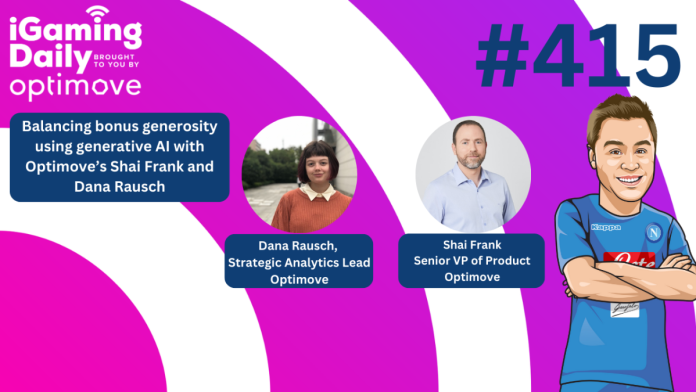Finding a balance between generosity and profitability presents a key challenge for operators in the modern iGaming market.
Optimove’s Senior VP of Product, Shai Frank, and Strategic Analytics Lead, Dana Rausch, explored this subject further on the iGamingDaily – analysing the potential impact of generative AI and how it can be used to help optimise bonus strategies.
Frank emphasised: “Many igaming operators are being very generous with promotions and bonuses even in cases where players might engage with a lower spend, so there are opportunities to protect profit margins while still maintaining player experience and player engagement.
“When you want to operate at scale, with larger volumes of players, with larger numbers of sports and casinos and with larger offers, sometimes it’s just so hard to scale. So it’s easier to just throw out a very generous bonus to a very large audience of eligible players and get the results that you aspire to get.”
As the race for market share intensifies in the US, Frank continued by stating that operators are offering bonuses that could take as long as a decade to recover the acquisition cost.
To combat this problem, generative AI, such as Optimove’s AI-powered platform OptiGenie, can be used to produce predictive models and provide effective segmentation between player cohorts.
“When you start your journey towards personalisation, you start with segmentation. Those predictive models come into play there and you want to only get the players who match a certain criteria. You are using those models to narrow down your audience,” explained Frank.
“There are a lot of machine learning and AI models further down the line to optimise your offers. Once I narrow down the segment I want to interact with, there’s still a lot of work that can be done to optimise the offer on things that are not necessarily player’s attributes, but rather their engagement in real-time and the response to different offers.
“These are things that some operators are trying to do manually with tests, but these are hard to scale. Technology these days allows us to do this on autopilot in an optimised way. If I’ve narrowed down three different offers, three different levels of generosity, [I can] let machine learning and AI continuously optimise based on the actual reaction [to the offer].”
This process, Rausch added, is not only crucial for customer acquisition but will also be vital for customer retention, especially in mature markets.
She said: “Where we can really improve this habit and protect margins is in retaining our customers. We know that we’ll always be competing for market share, but once we start learning about our players, once the market matures as well, the competition will still be there.
“So we need to focus on retaining players in a way that protects margins but also is giving [the players] the experience that they’re looking for.”
Frank agreed and also noted that operators can be guilty of acquiring and then reacquiring players as they focus so much on the “land grab of acquiring players for the first time and not spending enough energy in smart strategies to retain them”.
He concluded: “It’s such a huge cost. We’ve seen even trivial stuff like this election year, it’s becoming very expensive to put some ads in front of people because Facebook and Google ads are extremely expensive.
“So imagine you have to spend the same money again and again on the same player. The ability to stitch player identities and retain them over time is really important.”












